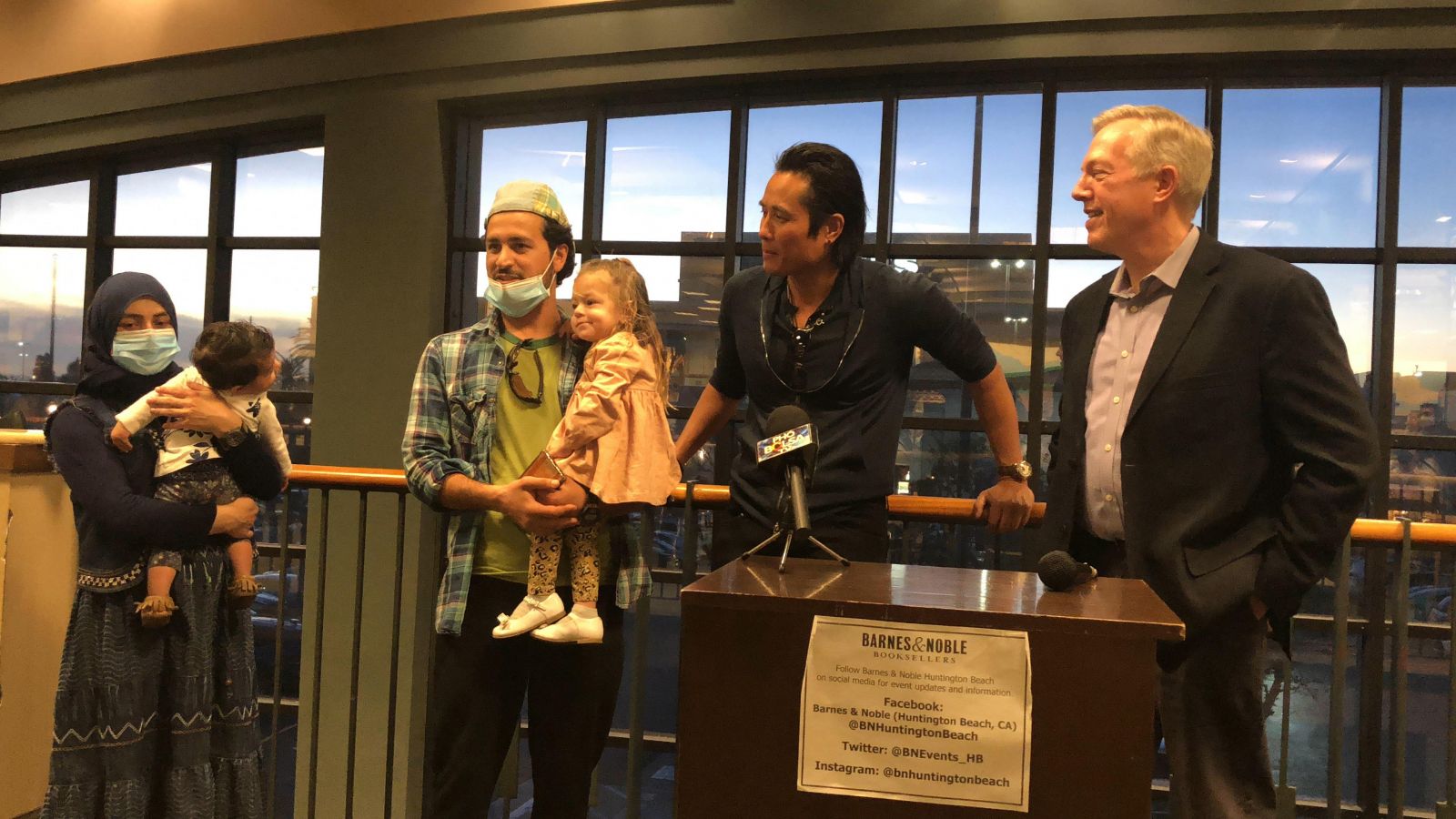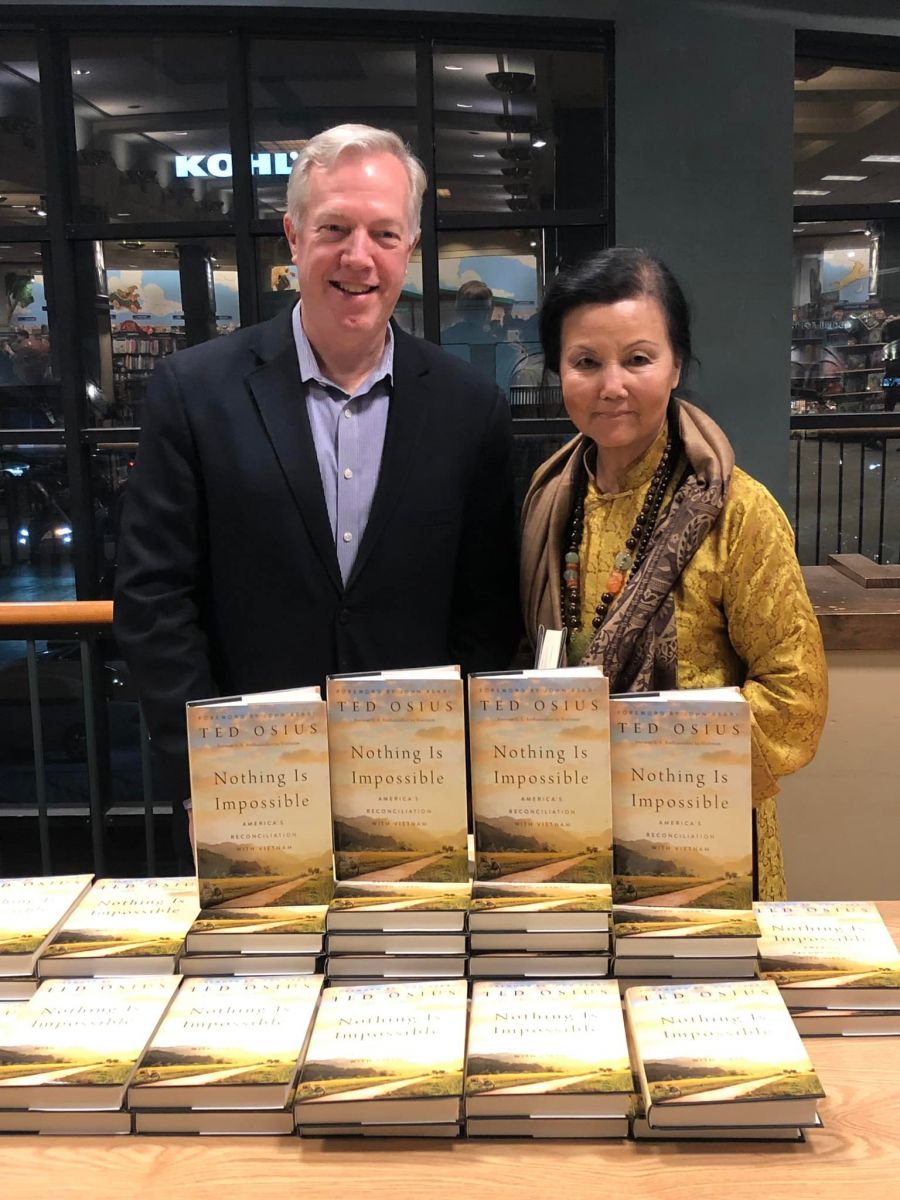Return to Little Saigon - by Ted Osius
The television interviewer from Little Saigon asked, “Will there be protests?”
It was the eve of my visit to Orange County, California, where many Vietnamese Americans lived, and where many people did not welcome my book’s message of reconciliation. There had been too much pain, and there was still anger about actions taken by the Communists in Hanoi.
I replied, “no, I don’t think so.” I had been received respectfully during past visits, and I felt that I was returning to a place where I had friends.
One of those friends was actress Kiều Chinh, whom I admired from her performances in The Joy Luck Club and Journey From the Fall, a film tracing a Vietnamese family through the fall of Saigon, the reeducation camps, the experience of boat people, and the initial difficulties of settling in the United States. In Huntington Beach, this brilliant actress inscribed for me her stunning memoir, Kiều Chinh: An Artist in Exile.
When she visited me in Hanoi a few years ago, in her capacity as president and co-founder of the Vietnam Children’s Fund, I learned that Kiều Chinh also appeared with Alan Alda in a M*A*S*H episode that was loosely based on her life story. She acted in the ABC Vietnam War drama series China Beach and NCIS: Los Angeles. In 1996, she won an Emmy for Kiều Chinh: A Journey Home, a documentary about her return to Saigon after forty-one years to reunite with her brother and visit her father’s grave.
I stayed with dear friends Trịnh Hội, a human rights lawyer and television host, and Nguyễn Cao Kỳ Duyên, the youngest daughter of Nguyễn Cao Kỳ, a former South Vietnamese Prime Minister, Vice President, and Air Force General. When Saigon fell, Duyên was ten, and her family relocated to the United States. A piano player from the age of five, she became a lawyer and then master of ceremonies for Thuy Nga's Paris by Night series.
I first met Hội in Orange County six-and-a-half years ago. This time, we rode bikes to Newport Beach, and ate delicious bún riêu (cooked by Duyên) and hủ tiếu Nam Vang in Little Saigon. Hội and Duyên are deeply involved in sponsoring Afghan refugees in Orange County. Many Vietnamese who came as refugees to the United States in the 1970s, 1980s and more recently found a warm welcome and discovered that Americans can be generous. I was moved to see Americans of Vietnamese origin opening their homes and giving generously. While I was visiting, a second Afghan family arrived, and Hội hurried to the airport to make these newest refugees feel welcome.
At a book event in a Barnes & Noble store in Huntington Beach, I signed one hundred copies of Nothing Is Impossible: America’s Reconciliation with Vietnam. I donated the proceeds to Afghan refugee sponsorships. And, based on the warm reception to my message there, I thought perhaps we had turned a corner on reconciliation.
I answered questions, and a few were skeptical. A journalist from SBTN TV asked about Fulbright University’s decision to cancel a book event in the autumn. “There are things I know and things I don’t know,” I replied. In 2015, Party General Secretary Nguyen Phu Trong promised that Fulbright University would have academic freedom, and students would be able to pursue their academic interests without interference.
“So when Fulbright asked me to speak with students about my book,” I continued, “I was happy to do it. A few days before the online event, however, a Fulbright leader wrote saying the event was canceled. There was no explanation.
“Some have speculated that government officials contacted Fulbright to say they weren’t happy with the contents of my book. But you’d need to ask Fulbright, as I don’t know whether that is true.”
I also related the story that begins my book. It started with my first visit to Little Saigon, when leaders of the community explained the importance of restoring Biên Hòa cemetery, of cleaning up its graves and honoring the souls buried there who had fought for South Vietnam.
I visited the cemetery, and then hosted an official dinner in honor of Harvard President Drew Gilpin Faust, described here: https://tedosius.com/honoring-people-who-died-and-bien-hoa-cemetery-25
Months later, I met with the chairman of the People’s Committee of Bình Dương province. We spoke of U.S. investments in his fast-growing province, as well as of taxes, power shortages, and other issues that mattered to U.S. companies there. Then we turned to the matter that had truly brought me to his province.
I repeated the request I had made to Vietnam’s Vice Foreign Minister: “I request permission for American citizens to finance digging ditches and cutting tree roots in Biên Hòa Cemetery,” I said. “No flags, no symbols, no politics. Just digging ditches and cutting tree roots.”
The chairman thanked me for sharing my “personal concerns.” “Of course, I will have to consult with Hanoi,” he added.
He did not say no.
I returned to the cemetery, this time with Nguyễn Đạt Thành, president of the Orange County–based Vietnamese American Foundation. We lit incense to honor the deceased South Vietnamese soldiers.
I didn’t hear from the chairman of Bình Dương’s People’s Committee for a few months. The prime minister had asked the Foreign Ministry, working with the province, to facilitate the renovation of Biên Hòa Cemetery by the Vietnamese American Foundation. The foundation was given permission to dig ditches and cut tree roots, and more than two hundred big trees had already been cut down. No one had lost face. Honor would be shown not to The Dead, but to people who had died.
Reconciliation could proceed a little further.
OTHER NEWS

